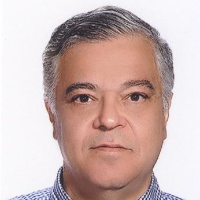The firing rate of neurons in the nucleus cuneiformis in response to formalin in male rat
Author(s):
Abstract:
Introduction
Although formalin-induced activity in primary afferent fibers and spinal dorsal horn is well described, the midbrain neural basis underlying each phase of behavior in formalin test has not been clarified. The present study was designed to investigate the nucleus cuneiformis (CnF) neuronal responses during two phases after subcutaneous injection of formalin into the hind paw of rat. Materials and Methods
In this study, seventy six male NMRI adult rats, weighing 230-320 g were used. Control group (n=24), which was tested merely for determining spontaneous firing rate of CnF neurons. Saline group (n=15) which received saline (50µl; s.c.) instead of formalin into the plantar surface of hind paw after 15 min baseline recording. Formalin group that formalin-induced neural activity of 37 cells simultaneously recorded from the CnF during first phase (0-5 min) and second phase (15-60 min) of formalin test in 5-min intervals, using an extracellular single unit recording technique. Results
The baseline firing rate of neurons in the CnF varied between 1.2 and 39.2 spikes/sec and the average frequency of spontaneous activity over 1 h was 11.8 ± 1.1 spikes/sec. There were three neural clusters after formalin injection. Neurons in cluster 1 (46%) exhibited severe, transient excitatory response in the first (acute) phase while neurons in cluster 2 (35%) exhibited tonic but long-lasting excitatory response in the second (chronic) phase. Cluster 3, a small portion of neurons (about one fifth) which failed to show any evident responses to formalin test. Conclusion
Our findings suggest that alteration of neural activity and pattern in the spontaneous background of CnF neurons can be mediated a role in the transmission of nociceptive information induced by the peripheral injection of formalin and can be discussed in light of the role of these neurons in nociceptive information processing following peripheral stimuli.Language:
Persian
Published:
Physiology and Pharmacology, Volume:12 Issue: 2, 2008
Page:
101
https://magiran.com/p536941
مقالات دیگری از این نویسنده (گان)
-
Cannabidiol Modulating the Expression of Neurotrophin Signaling Pathways in Chronic Exposure to Methamphetamine in Rats During Abstinence Period
Yasaman Razavi, Mohammad Najafi, , Fariborz Keyhanfar, Ronak Shabani, Mehdi Mehdizadeh*
Basic and Clinical Neuroscience, Sep-Oct 2022 -
Differential Aspects of Natural and Morphine Reward-related Behaviors in Conditioned Place Preference Paradigm
Shole Jamali, Mahdi Aliyari Shoorehdeli, MohammadReza Daliri, *
Basic and Clinical Neuroscience, Sep-Oct 2022



